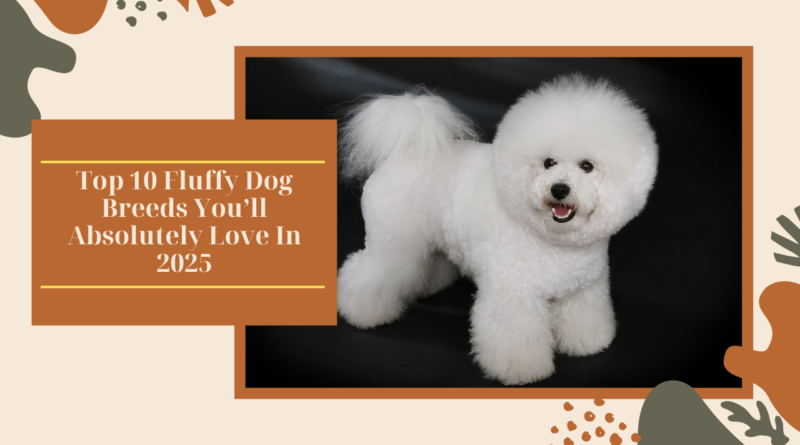Top 10 Fluffy Dog Breeds You’ll Absolutely Love In 2025
Introduction: Why Fluffy Dogs Are So Adorable?
Fluffy dogs are among the most popular pets worldwide. There’s something magical about their soft, thick coats, expressive eyes, and playful personalities that capture the hearts of dog lovers everywhere. These dogs are not just adorable—they are loyal, intelligent, and loving companions that fit into a variety of lifestyles.
People often search for small fluffy dogs for apartments, hypoallergenic fluffy dogs, or large fluffy dogs that make a statement in the park. Each breed has unique traits, so understanding their grooming needs, exercise requirements, and health considerations is key to a successful relationship with your new pet.
This article explores the top 10 fluffy dog breeds, detailing their history, personality, grooming needs, health concerns, and tips for families. Whether you are a first-time dog owner or a seasoned enthusiast, this guide will help you choose the perfect fluffy companion.
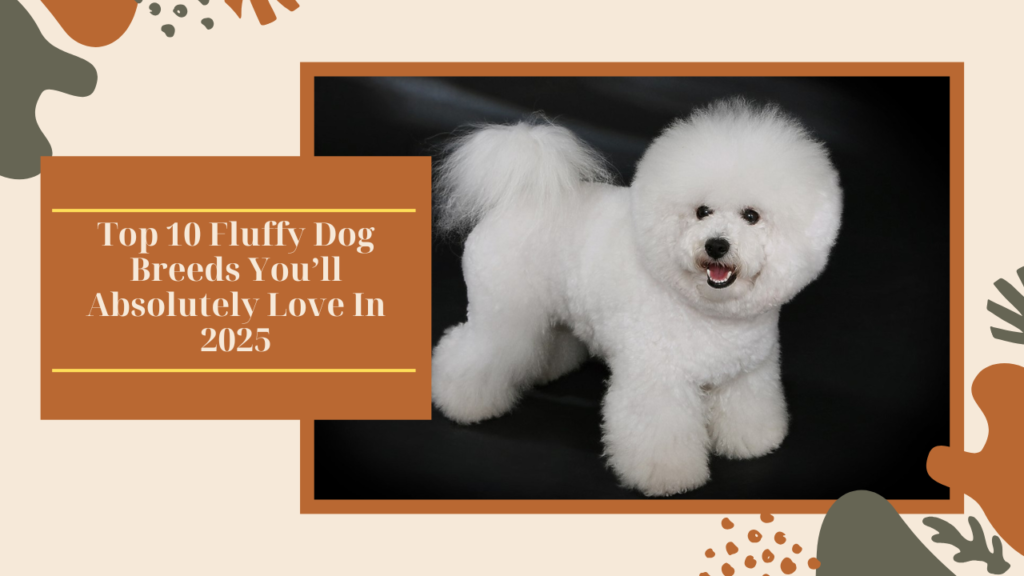
Top 10 Fluffy Dog Breeds
1. Samoyed – The Smiling Fluffball
Samoyeds are instantly recognizable due to their signature “Sammy smile.” They are medium to large dogs originally bred by the Samoyed people of Siberia for herding reindeer and pulling sleds.
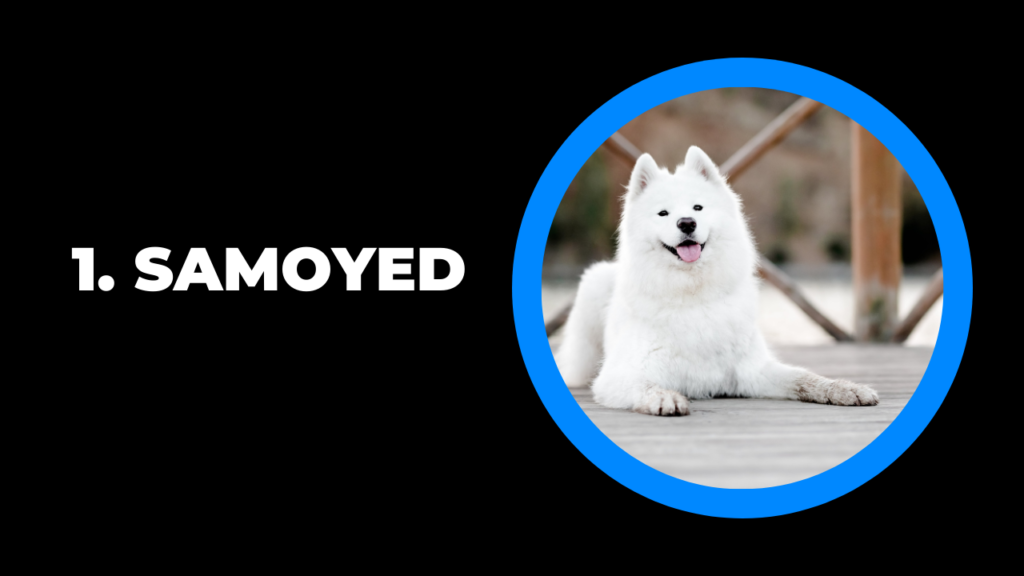
- Size: 45–65 lbs
- Coat: Thick double coat, usually white or cream
- Temperament: Gentle, friendly, playful, social
- Lifespan: 12–14 years
- Grooming: Daily brushing; heavy shedding twice a year
- Health Considerations: Hip dysplasia, diabetes, heart disease
Personality and Traits:
Samoyeds are highly social and thrive in active households. They are playful, great with children, and form deep bonds with their families. Their thick coat requires patience and care, but it protects them from extreme cold.
Fun Fact: The Samoyed’s fur reflects sunlight, which helps regulate body temperature in snowy conditions.
Training Tips:
Early socialization is crucial. Positive reinforcement methods work best because Samoyeds are sensitive to harsh correction.
2. Chow Chow – The Lion-Like Fluff
Chow Chows are ancient dogs originating from China. They have dense, fluffy coats and a lion-like mane, making them stand out in any dog park.
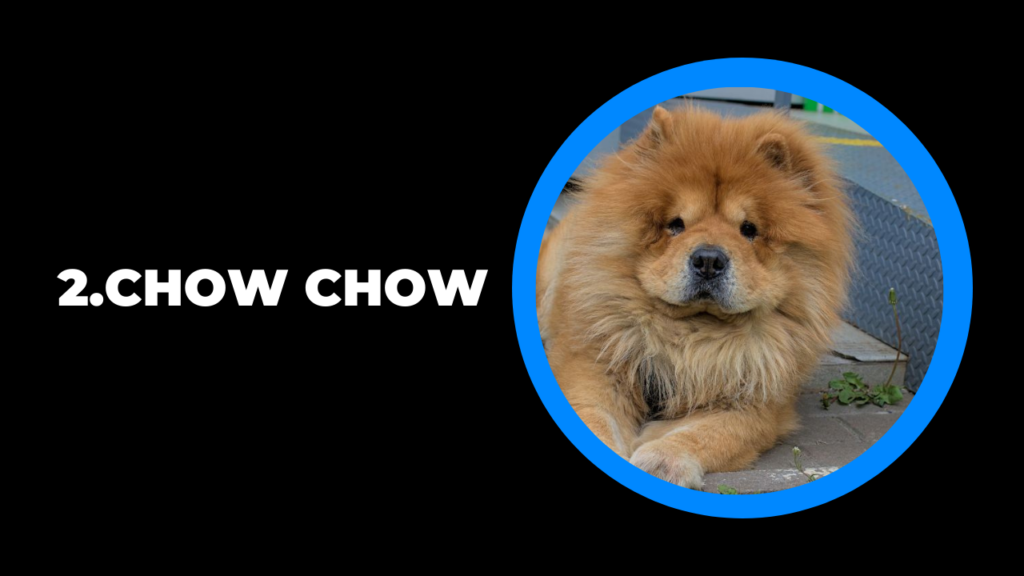
- Size: 45–70 lbs
- Coat: Dense and fluffy; red, black, cream, cinnamon, or blue
- Temperament: Independent, loyal, protective
- Lifespan: 8–12 years
- Grooming: Frequent brushing to avoid matting
- Health Considerations: Hip dysplasia, entropion, heat sensitivity
Personality and Traits:
Chow Chows are dignified and protective. They are often aloof with strangers but loyal to family members. Early socialization is crucial to prevent aggressive tendencies.
Fun Fact: Chow Chows have a rare blue-black tongue, a trait only shared by a few other breeds worldwide.
Training Tips:
Start socialization and obedience training at a young age. Chow Chows respond best to patient, consistent methods.
3. Pomeranian – Tiny, Energetic Fluff
Pomeranians are small, lively dogs with an outsized personality. Their fluffy coat makes them look bigger than they are, adding to their charm.
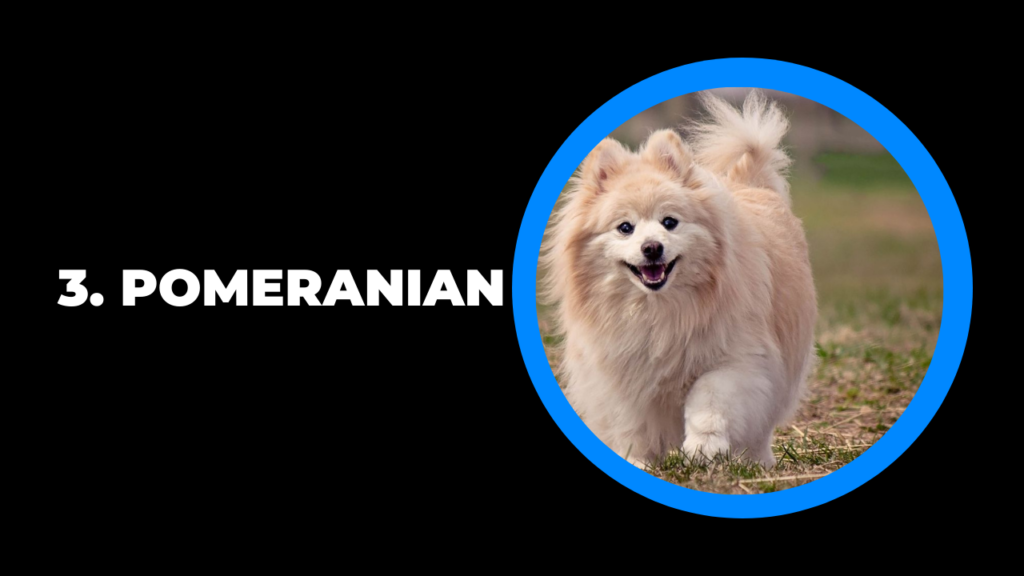
- Size: 3–7 lbs
- Coat: Thick double coat in various colors
- Temperament: Energetic, playful, affectionate, intelligent
- Lifespan: 12–16 years
- Grooming: Daily brushing to prevent tangles
- Health Considerations: Dental issues, luxating patella, tracheal collapse
Personality and Traits:
Pomeranians are bold, curious, and love mental stimulation. They are perfect for apartment living but require daily exercise to burn energy.
Fun Fact: Queen Victoria popularized the Pomeranian in Europe after adopting one during her reign.
Training Tips:
Use short, positive sessions and reward-based training. Pomeranians love learning tricks and interacting with their owners.
4. Bichon Frise – The Hypoallergenic Cloud
Bichon Frises are small dogs known for their curly, fluffy, hypoallergenic coats. They are ideal for families with allergy concerns.
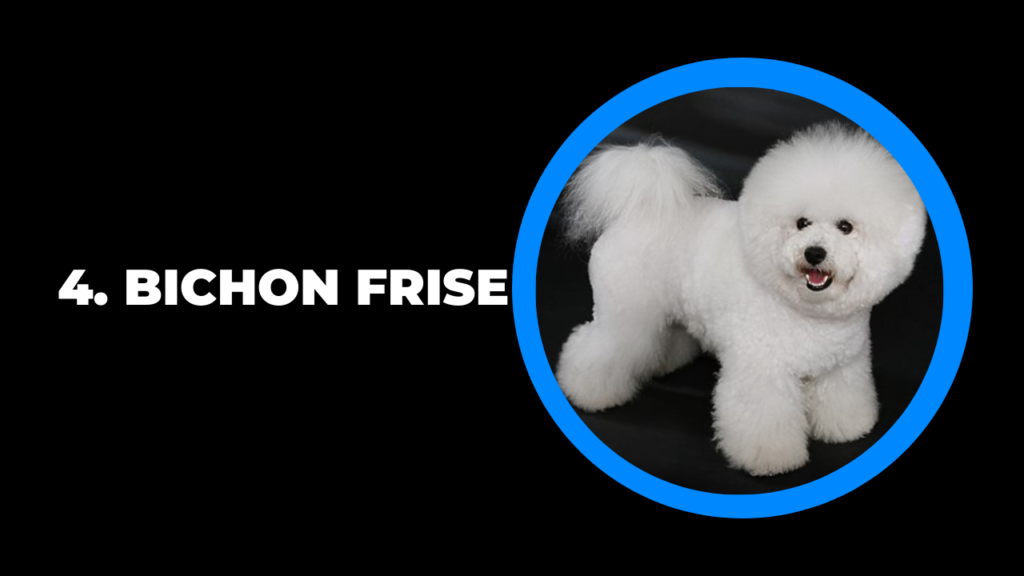
- Size: 12–18 lbs
- Coat: Curly, fluffy, low-shedding
- Temperament: Cheerful, friendly, playful, intelligent
- Lifespan: 14–15 years
- Grooming: Professional grooming every 4–6 weeks; daily brushing recommended
- Health Considerations: Allergies, dental problems, patellar luxation
Personality and Traits:
Bichons are affectionate, social, and enjoy family life. They are excellent therapy dogs due to their gentle and friendly nature.
Fun Fact: Bichon Frises were popular in Europe during the Renaissance and were often seen in royal courts.
Training Tips:
These dogs respond well to positive reinforcement. Crate training and early socialization help them adapt to new environments.
5. Alaskan Malamute – Majestic Arctic Fluff
Alaskan Malamutes are large, strong, and incredibly fluffy. Originally bred for sledding and heavy hauling in Alaska, they are energetic and loyal.
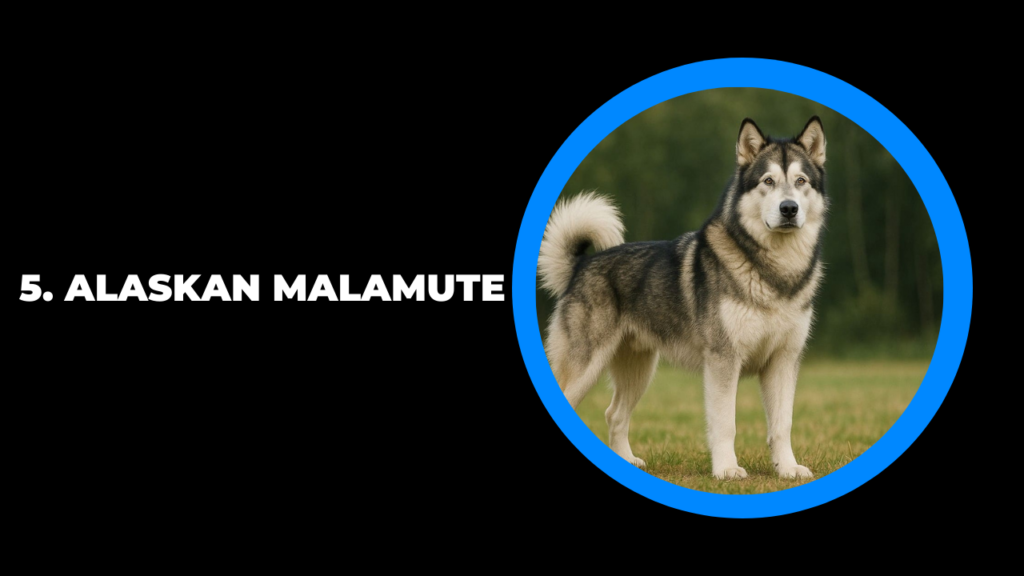
- Size: 75–100 lbs
- Coat: Thick double coat, usually gray and white
- Temperament: Loyal, friendly, intelligent, active
- Lifespan: 10–14 years
- Grooming: Daily brushing; heavy seasonal shedding
- Health Considerations: Hip dysplasia, bloat, inherited conditions
Personality and Traits:
Malamutes are best for active households with space for exercise. They enjoy long walks, outdoor adventures, and mental challenges.
Fun Fact: Alaskan Malamutes are ancestors of Siberian Huskies but are stronger and larger.
Training Tips:
Consistent leadership is necessary. Positive reinforcement and structured routines help manage their energy.
6. Shetland Sheepdog (Sheltie) – Smart Fluff
Shelties are miniature Collies with fluffy coats and high intelligence. They excel in obedience and agility competitions.
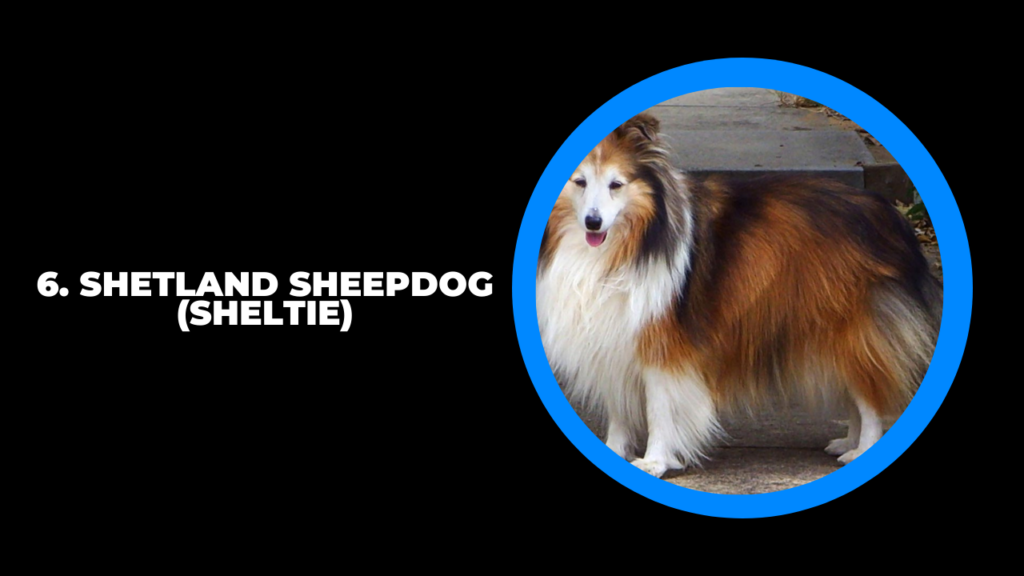
- Size: 14–27 lbs
- Coat: Long, dense double coat
- Temperament: Intelligent, loyal, affectionate, active
- Lifespan: 12–14 years
- Grooming: Weekly brushing; more during shedding season
- Health Considerations: Eye disorders, hip dysplasia
Personality and Traits:
Shelties are excellent with children and thrive on mental stimulation. They are loyal, alert, and quick learners.
Fun Fact: Shelties were originally bred to herd sheep in the Shetland Islands of Scotland.
Training Tips:
Early socialization and consistent training keep them confident and well-behaved.
7. American Eskimo Dog – Snowy Fluff
American Eskimo Dogs are small to medium fluffy dogs known for their snow-white coats and playful personalities.
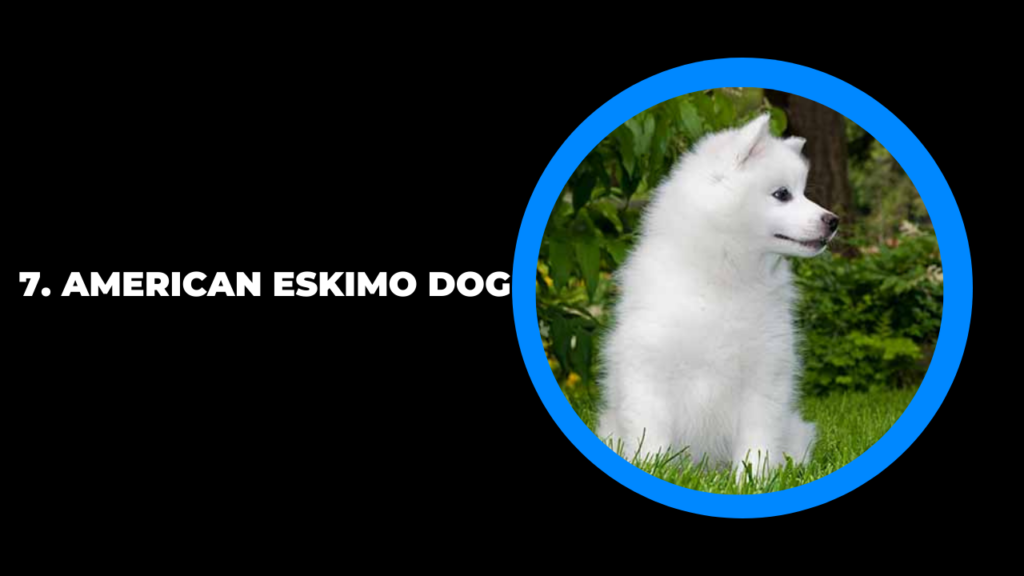
- Size: 6–35 lbs depending on variety
- Coat: Thick double coat, snow-white
- Temperament: Intelligent, friendly, alert, social
- Lifespan: 12–15 years
- Grooming: Regular brushing; professional grooming every 6–8 weeks
- Health Considerations: Eye disorders, hip dysplasia
Personality and Traits:
They are affectionate, enjoy human interaction, and thrive on mental and physical stimulation.
Fun Fact: They were brought to the U.S. from Germany in the early 20th century and became popular as circus performers due to their agility.
Training Tips:
Positive reinforcement and interactive games keep them happy and mentally stimulated.
8. Keeshond – Social Fluff
Keeshonds are medium-sized dogs with thick double coats and distinctive “spectacles” around their eyes.
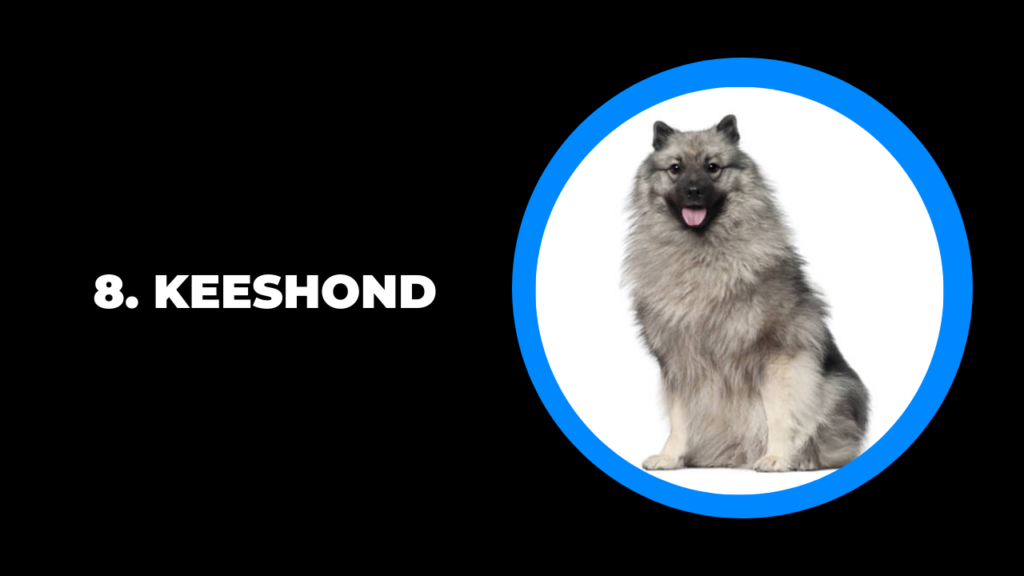
- Size: 35–45 lbs
- Coat: Thick double coat with plush mane
- Temperament: Social, affectionate, loyal
- Lifespan: 12–15 years
- Grooming: Brushing 2–3 times per week
- Health Considerations: Hip dysplasia, heart issues
Personality and Traits:
Keeshonds are ideal for families that can provide attention and social interaction.
Fun Fact: They were used as barge dogs in the Netherlands, guiding boats along canals.
Training Tips:
Early socialization helps reduce separation anxiety. They thrive in interactive households.
9. Tibetan Mastiff – Giant Fluff
Tibetan Mastiffs are large, fluffy dogs known for their protective instincts and majestic appearance.
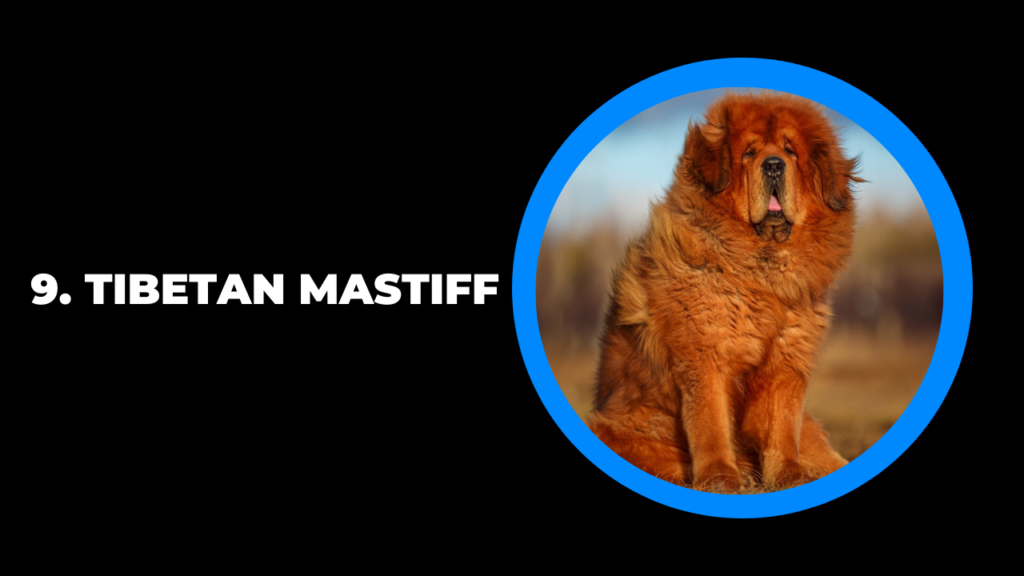
- Size: 70–150 lbs
- Coat: Dense double coat
- Temperament: Independent, protective, loyal
- Lifespan: 10–14 years
- Grooming: Weekly brushing; heavy shedding seasonally
- Health Considerations: Hip dysplasia, obesity
Personality and Traits:
Tibetan Mastiffs are loyal family protectors. They require experienced owners due to their independent nature.
Fun Fact: These dogs were prized by nomadic cultures to guard livestock and monasteries.
Training Tips:
Firm, consistent, and positive reinforcement methods work best.
10. Lhasa Apso – Small Elegant Fluff
Lhasa Apsos are small, long-haired dogs originally bred as watchdogs in Tibetan monasteries.
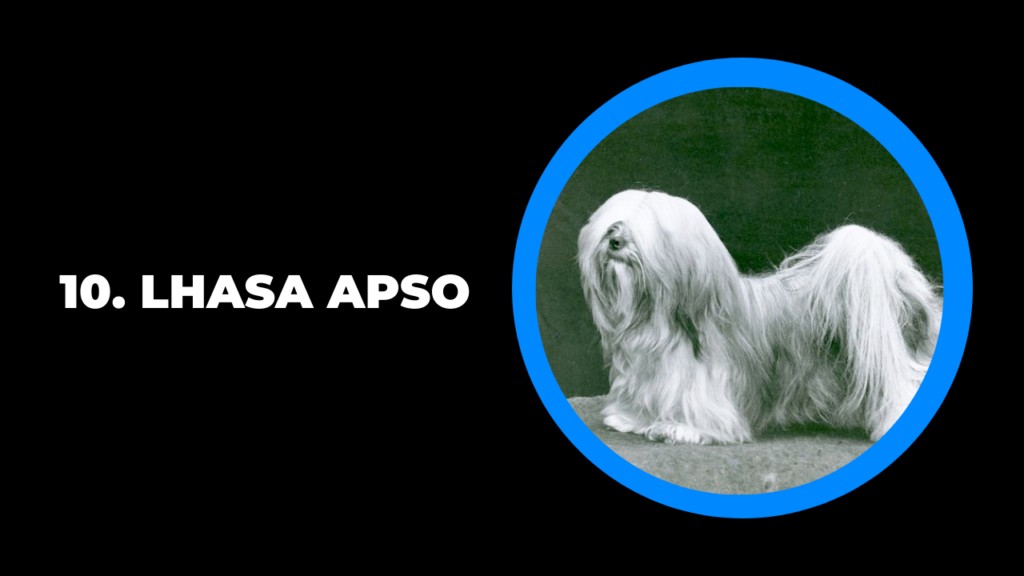
- Size: 12–18 lbs
- Coat: Long, silky, fluffy
- Temperament: Loyal, alert, independent
- Lifespan: 12–15 years
- Grooming: Regular trimming and grooming required
- Health Considerations: Eye issues, hip dysplasia
Personality and Traits:
Despite their size, Lhasa Apsos are alert and make excellent watchdogs.
Fun Fact: They can live up to 20 years, making them one of the longest-lived dog breeds.
Training Tips:
Early socialization ensures they are confident and well-adjusted in different environments.
Tips for Owning a Fluffy Dog
- Daily Grooming: Prevent mats, tangles, and skin infections.
- Healthy Diet: Quality nutrition affects coat health.
- Exercise Needs: Small dogs need short walks; large dogs need long outdoor activities.
- Professional Grooming: Especially for long-haired breeds every 6–8 weeks.
- Health Monitoring: Fluffy coats hide skin conditions; regular checkups are essential.
- Training & Socialization: Key for independent or protective breeds.
- Mental Stimulation: Puzzle toys, agility training, and social play keep them happy.
Comparison Table: Small vs Large Fluffy Dogs
| Size | Popular Breeds | Shedding | Grooming Level | Exercise Needs | Family Friendly | Hypoallergenic |
|---|---|---|---|---|---|---|
| Small | Pomeranian, Bichon, Lhasa Apso | Low-Med | High | Moderate | Yes | Yes |
| Medium | Sheltie, Keeshond, American Eskimo | Med-High | High | High | Yes | Some |
| Large | Samoyed, Malamute, Tibetan Mastiff | High | Very High | Very High | Moderate | No |
FAQs About Fluffy Dog Breeds
1. What is the fluffiest dog breed?
Samoyeds are considered the fluffiest due to their thick double coats.
2. Which fluffy dogs are hypoallergenic?
Bichon Frises, Maltese, and Poodle mixes are excellent options.
3. What small fluffy dogs don’t shed much?
Bichon Frise, Maltese, and Havanese.
4. Are fluffy dogs good for families?
Yes! Shelties, Pomeranians, and Keeshonds are great with children.
5. Do fluffy dogs require more grooming than other breeds?
Yes, daily brushing and professional grooming are essential.
6. Can fluffy dogs live in apartments?
Small and medium breeds adapt well; large breeds need more space and exercise.
7. Which fluffy dog is best for first-time owners?
Bichon Frise, Pomeranian, and Sheltie are easier for beginners.
8. How often should I groom a fluffy dog?
Daily brushing is recommended; professional grooming every 4–8 weeks depending on the breed.
9. Which fluffy dogs are most playful?
Pomeranians, American Eskimos, and Shelties are highly energetic and playful.
10. Do fluffy dogs overheat easily?
Yes, large breeds like Malamutes and Samoyeds can overheat in hot climates; always provide shade and water.
Conclusion
Fluffy dogs are more than cute companions—they are loyal, intelligent, and loving family members. From small hypoallergenic breeds to majestic giants, there is a perfect fluffy dog for every lifestyle. Understanding their grooming, health, and exercise requirements ensures a happy, healthy pet.
Whether it’s the “smiling” Samoyed, energetic Pomeranian, or protective Tibetan Mastiff, a fluffy dog brings joy, warmth, and endless cuddles to your home. Choosing the right breed can lead to a lifetime of happiness, companionship, and unforgettable memories.

